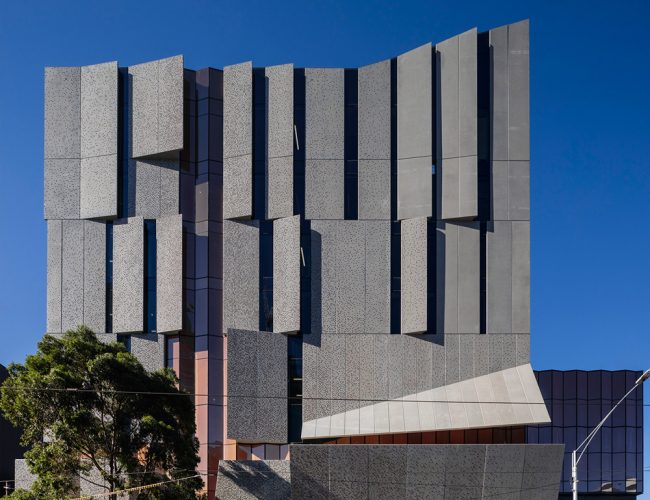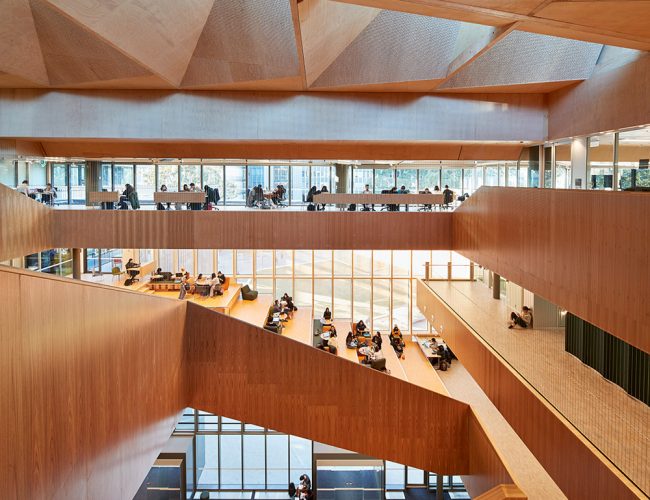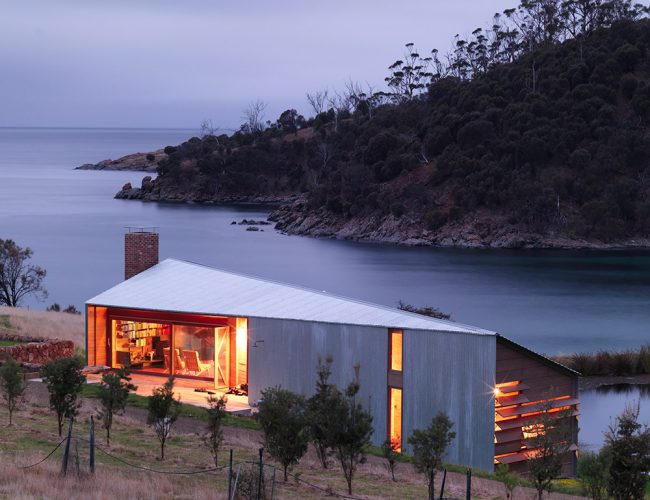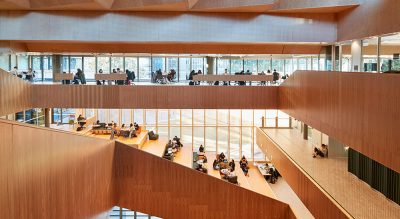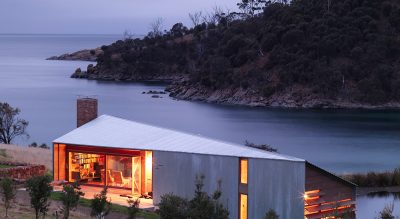Wardle is internationally renowned for making extraordinary buildings and places that matter. Through open dialogue and rigorous exploration, we work collaboratively with our clients to realise the full potential of each project.
We are a collective of many minds and diverse voices. Architects, designers, inventors, and makers — our creativity takes on many forms and we discover opportunities in the most unlikely places. Impassioned by our culture of curiosity and inventiveness, we are deeply interested in learning from cultures, crafts, histories, and technologies. From our studios in Melbourne and Sydney, we work across Australia and internationally on projects of all scales, from the intimate to the expansive.
One of our fundamental design principles is to explore all opportunities to limit the negative impact that construction of buildings and cities has upon our climate and natural environment. We aim to minimise energy consumption of building systems, reduce the embodied carbon of materials, reuse and recycle structures, make buildings that are increasingly self-sufficient, and connect people with nature. Through research, collaboration, and advocacy we have achieved sustainable design outcomes working with a wide range of clients across diverse sites and building types.
Our Melbourne School of Design was a testbed for a ‘living building’ that experimented with long span timber structures, parametrically tuned sun shading and mixed-mode natural ventilation. It is a demonstration building for its students, the next generation of architects, planners and builders, about sustainable design practice.
Wardle is particularly interested in materials research and has further explored the use of timber to sequester carbon in the Learning and Teaching Building at Monash University and the Ballarat Gov Hub. Our most recently completed inner-city house, the Limestone House, is completely off grid and is built with locally sourced natural materials.
In 2019 we became one of 30 founding signatories to the Australian Architects Declare Climate & Biodiversity Emergency movement. Part of our commitment to tackling the climate crisis was our goal to become certified carbon neutral by 2021.
Climate Change Action
Wardle achieved carbon neutral certification on 19/11/2020. To achieve this status and become carbon neutral Wardle undertook the following process:
- Commissioned a NoCO2 audit from CRI to measure their carbon footprint for FY2020. CRI’s NoCO2 audit follows the standards outlined by the World Business Council for Sustainable Development’s Greenhouse Gas Protocol Corporate Accounting and Reporting Standard (1), in addition to the international standard ISO 14064.1 (2).
- Have committed to offset their unavoidable emissions through the purchase of units in approved projects under the Verified Carbon Standard (VCS) and Gold Standard, and
- Committed to ongoing annual auditing of their emissions.
What does NoCO2 Certification mean?
By meeting the requirements of the NoCO2 Program, Wardle is certified as a Carbon Neutral Business by CRI; can be promoted and marketed as such and can display the NoCO2 Logo issued by CRI.
What Carbon Credit Projects does Wardle purchase offsets from?
India Clean Energy from Biomass
The aim of Biomass projects is to utilize agricultural waste or other non-renewable biomass residues as fuel to generate power and to lower the plants’ dependence on the local grid for electricity. Before the implementation of the project, the electricity needs of such plants were met by power from a coal dominated grid. To meet the rising energy demands in production, a new efficient biomass boiler was installed together with a steam turbine, producing both steam and electricity. The new boilers are fuelled with locally available agricultural waste instead of traditional, emission intensive coal.
Before the start of the project, these agricultural residues were not used. They were either burned without harnessing the resulting thermal energy, or simply left to decay, thereby generating methane emissions. The plant’s steam and electricity requirements can be now supplied by the new cogeneration unit. The investment required for the installation of the new cogeneration unit could not have been raised were it not for the revenue from sales of carbon credits.
